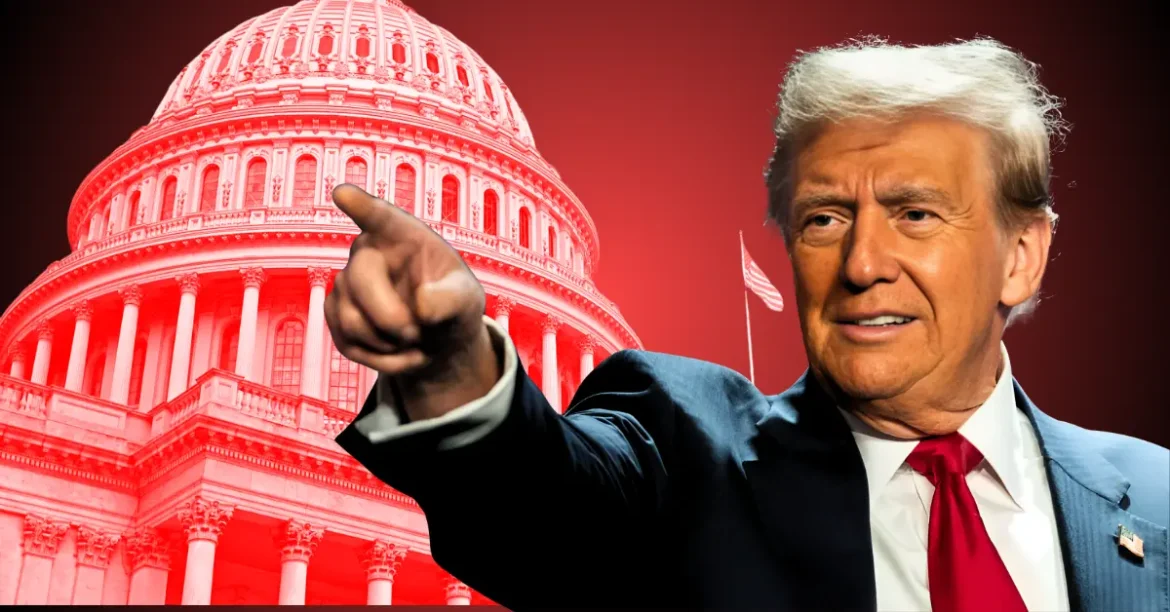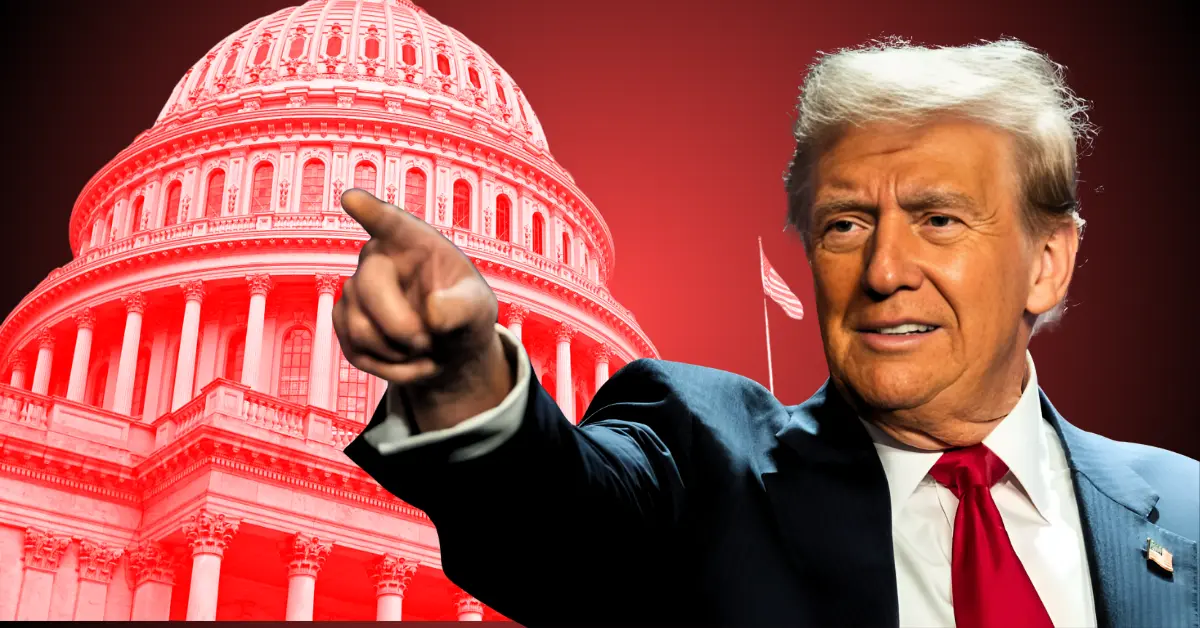The “Big Beautiful Bill,” a comprehensive legislative package proposed by former U.S. President Donald Trump, has sparked intense debate regarding its economic implications. The bill encompasses tax reforms, spending initiatives, and adjustments to the debt ceiling, all of which could significantly influence the financial landscape. Among the various assets affected, Bitcoin stands out as a particularly intriguing case study. As the world’s leading cryptocurrency, Bitcoin’s decentralized nature and finite supply make it a unique asset in the context of the bill’s potential economic consequences. This analysis explores the multifaceted impact of the “Big Beautiful Bill” on Bitcoin, examining both the opportunities and challenges it presents.
Inflationary Pressures and Bitcoin’s Role as a Hedge
One of the most significant components of the “Big Beautiful Bill” is its tax cuts, primarily benefiting corporations and high-income earners. While proponents argue that these cuts will stimulate economic growth, critics warn of the potential for increased government borrowing and a widening budget deficit. This scenario could lead to inflationary pressures, as the government may resort to printing more money to finance its debt. In such an environment, Bitcoin’s appeal as a hedge against currency devaluation becomes particularly relevant.
Bitcoin, with its fixed supply of 21 million coins, is often compared to gold due to its scarcity and resistance to inflation. If the “Big Beautiful Bill” leads to higher inflation, investors may increasingly turn to Bitcoin as a safe haven asset. This shift could drive up demand and push prices higher, reinforcing Bitcoin’s narrative as “digital gold.” Several analysts have noted that the bill could replicate monetary conditions that previously fueled Bitcoin’s bull runs, particularly if the real value of cash and bonds erodes.
However, the relationship between inflation and Bitcoin is not always straightforward. While Bitcoin has been touted as an inflation hedge, its price volatility and susceptibility to speculative trading can sometimes overshadow its role as a stable store of value. Additionally, the bill’s potential to increase economic uncertainty could lead to heightened market volatility, which may deter risk-averse investors from embracing Bitcoin.
Debt Ceiling Concerns and Bitcoin’s Safe Haven Appeal
Beyond tax cuts, the “Big Beautiful Bill” also raises concerns about the U.S. debt ceiling. The bill’s provisions could substantially increase the national debt, potentially leading to a debt crisis if not managed effectively. Such a crisis could trigger significant economic uncertainty, eroding confidence in traditional financial markets and institutions.
In times of economic turmoil, investors often seek safe haven assets to protect their capital. Gold has traditionally served this role, but Bitcoin is increasingly being considered as a viable alternative, particularly among younger investors. Bitcoin’s decentralized nature and resistance to censorship make it an attractive option for those seeking to escape the control of governments and central banks.
If the “Big Beautiful Bill” leads to a debt crisis and heightened economic uncertainty, Bitcoin could experience a surge in demand as investors flock to its perceived safety. This could drive up its price and further solidify its position as a legitimate alternative asset. However, it is essential to recognize that a severe debt crisis could also have far-reaching consequences for the entire global economy. While Bitcoin might initially benefit from a flight to safety, a prolonged economic downturn could ultimately depress demand for all assets, including cryptocurrencies.
Regulatory Ambiguity and the Path to Mainstream Adoption
While the “Big Beautiful Bill” does not explicitly address cryptocurrencies, it could indirectly impact the regulatory landscape surrounding Bitcoin. One potential avenue is the inclusion of a de minimis tax exemption for crypto assets. This exemption would allow American crypto users to not report small crypto transactions, reducing the tax burden and streamlining the process of using Bitcoin for everyday purchases. This would reduce friction and make Bitcoin easier to use in commerce.
More broadly, the tax reforms implemented as part of the “Big Beautiful Bill” could pave the way for a more comprehensive regulatory framework for cryptocurrencies. Clear and consistent regulations are essential for fostering mainstream adoption of Bitcoin, as they provide clarity for businesses and investors. However, the bill’s potential to increase economic uncertainty could also lead to stricter regulations on Bitcoin, particularly if its price surges dramatically. Governments may seek to impose stricter regulations on Bitcoin, potentially stifling its growth and innovation.
The Elon Musk Factor: A Counter Narrative
While many in the cryptocurrency community see the “Big Beautiful Bill” as potentially beneficial to Bitcoin, there are dissenting voices, most notably Elon Musk. Musk has voiced concerns about the bill’s potential to exacerbate the national debt and destabilize the economy. He suggests the bill could spell disaster for America.
Musk’s skepticism highlights a crucial point: the impact of the “Big Beautiful Bill” on Bitcoin is not guaranteed. Ultimately, the fate of Bitcoin will depend on a complex interplay of factors, including macroeconomic conditions, regulatory developments, and market sentiment. While the bill could potentially fuel Bitcoin’s growth by driving inflation, increasing economic uncertainty, and paving the way for favorable regulatory reforms, it also poses risks, including increased market volatility and the potential for a debt crisis.
Environmental Concerns and Bitcoin’s Sustainability
Another critical aspect to consider is the environmental impact of Bitcoin mining. The energy-intensive process of mining Bitcoin has drawn criticism from environmental advocates, who argue that the cryptocurrency’s growth could support environmentally damaging mining operations. If the “Big Beautiful Bill” leads to a surge in Bitcoin’s price and adoption, it could exacerbate these environmental concerns, potentially leading to regulatory backlash.
However, it is essential to recognize that the Bitcoin community is actively working on solutions to address these environmental challenges. For example, some mining operations are transitioning to renewable energy sources, and technological advancements are being made to improve the efficiency of mining processes. Additionally, the bill’s potential to stimulate economic growth could also lead to investments in renewable energy, which could indirectly benefit Bitcoin’s sustainability.
Conclusion: Navigating the Uncharted Waters
The “Big Beautiful Bill” represents a significant turning point in U.S. economic policy, and its implications for Bitcoin are complex and far-reaching. While the bill could potentially fuel Bitcoin’s growth by driving inflation, increasing economic uncertainty, and paving the way for favorable regulatory reforms, it also poses risks, including increased market volatility and the potential for a debt crisis.
Ultimately, the impact of the “Big Beautiful Bill” on Bitcoin will depend on a complex interplay of factors, many of which are difficult to predict. Investors and enthusiasts should carefully weigh the potential benefits and risks before making any investment decisions. Bitcoin’s journey in the wake of the “Big Beautiful Bill” will likely be one of navigating uncharted waters, demanding both vigilance and adaptability. As the bill continues to wind its way through the political process and its economic consequences begin to unfold, the world will be watching to see whether Bitcoin can truly emerge as a resilient store of value in an era of unprecedented uncertainty.





